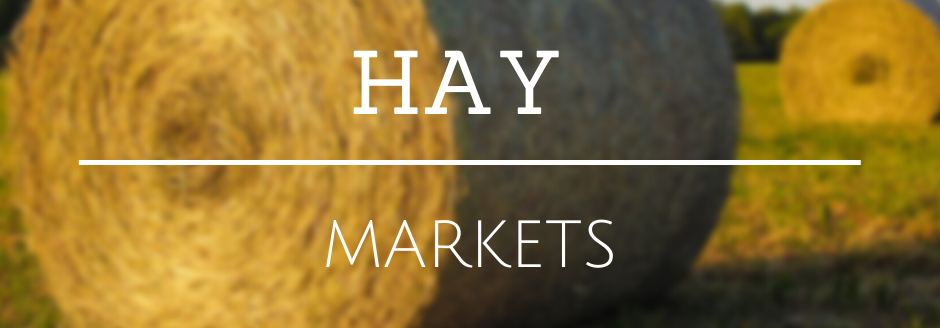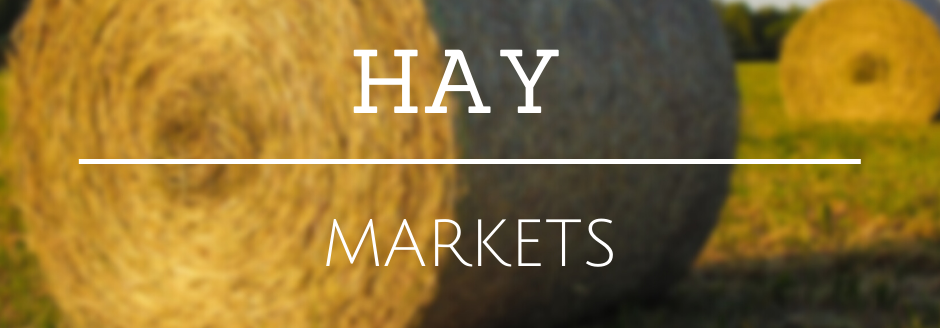Colorado—In the Aug. 17 report, compared to last report, trade activity and demand has softened. Hay trades are slow as second cutting is well underway across the state. Areas that have received a lot of rain since mid-May have created challenges in putting up hay that will test. Later cut alfalfa with low test is going to be moving into the grinder markets. Producers have struggled to put up hay without any rain on it. According to Colorado Crop Progress report, alfalfa hay second cutting is 83% complete and third cutting is 16% compete.
Missouri—In the Aug. 17 report, compared to last report, the hay supply is light, demand is moderate. Hay prices are mostly steady however a slight bit of weakness was noted on some of the lower quality hay mostly in round bales as the extreme tops seen a month or so ago are no longer present. Drought conditions are improving with some recent rains. Grass has responded to the moisture much quicker than nearly anyone expected. Some hay equipment has been put back to work and some farmer’s eagerly reporting grass is out pacing grazing which is nearly unheard of in August.
Nebraska—In the Aug. 17 report, compared to last report, alfalfa sold unevenly steady. Meadow grass hay sold $20 lower. Ground and delivered hay and dehydrated pellets sold steady. Demand was light for most offerings of hay. Quite a lot of “tire kickers” just seeing what is available and the price of the hay. Some reports of meadow grass tonnage near a normal year. Silage chopping is kicked off in some areas in the eastern side of the state with a few choppers going in the central areas on dryland fields. Producers in the east are on fourth cutting with producers in other areas on second or third cutting of alfalfa. Some speculate there’s been enough rain to get a second cutting of grass or brome hay. Quite a few acres of cane and millet hay getting cut around the state. Many old timer hay producers use the rule of thumb on secondary hay is 75% the value of good quality alfalfa hay. So, when pricing cane, millet and others know the price of good quality alfalfa hay in the area sitting in the field, (not delivered) to compute the asking price. Hot, dry weather is in the forecast the next several days and forage producers are happy and hope to bale good, green, leafy alfalfa and top quality meadow hay.
Oklahoma—In the Aug. 18 report, compared to the last report, hay is slow to steady. The demand in eastern Oklahoma is high. The central and western part trade is slow to moderate. Next report will be released Sept. 1.
Texas—In the Aug. 11 report, compared to the last report, hay prices are mostly steady across the majority of the regions, with the exception of the south where prices were mostly firm to $5 higher. Trading activity was moderate to active on good buyer demand. Pasture and rangeland conditions are beginning to move into dormancy due to persistent hot and dry conditions across most of the state. As a result, buyer demand has increased for hay as supplemental feeding has begun to take place in some regions and producers are more willing to stock up for the fall. Hay has continued to move into the state from Colorado, New Mexico and Kansas which has helped restock supplies from last year. However, high freight rates of hay moving into the state continue to be a major influence on the final price. Next report will be released Aug. 25.
South Dakota—In the Aug. 18 report, compared to last report, alfalfa and grass hay steady. Very good demand remains for all types and qualities of hay. Beautiful weather this week allowed for alfalfa producers to work on their third cutting. Beneficial rains last week helping to allow for regrowth for those who have already made their third cutting. Western parts of the state remain out of drought, there has been great improvement East River yet the I-29 corridor remains the worst.
New Mexico—In the Aug. 18 report, compared to last report, alfalfa hay steady. Trade active, demand good. Alfalfa hay is at 95% finished with second cutting, most hay producers in the southern part of the state are 60% finished with third cutting and 2% starting fourth cutting, The northern part of the state is in the second cutting. Hay and roughage supplies were reported as 28% very short, 39% short, 27% adequate, and 6% surplus. Stock water supplies were reported as 31% very short, 36% short, 31% adequate and 2% surplus.
Wyoming—In the Aug. 17 report, compared to last report, hay sales sold steady. Demand was light to moderate. All calls this week found hay producers in a pretty good mood since hay being baled has not been rained on. Hot, sunny weather across the state has helped producers get hay baled in a timely fashion. Some combines continue to harvest wheat and barley. Some contacts are baling straw, triticale and Sudan grass.
Montana—In the Aug. 18 report, compared to last report, local demand for hay remains light, while demand to ship hay out of state is mostly moderate. Sales are seasonably light. Producers are not in a rush to market their hay as price discovery is still occurring. A few large sales occurred over the last two weeks, but sale volume remains seasonably light while supplies are heavy. The square market is very quite as producers continue to ask $180 to $200+ for hay. A few producers are selling hay but well under most producers asking prices. This has stalled the marketing of hay as asking prices and actual sales remain far apart. Many ranchers have stated they won’t need to buy much if any hay this year as many of them have put up enough of their own hay. Second cutting is continuing to wrap up in central Montana as it is 2 to 3 weeks behind the southern and eastern portions of the state. Demand for straw is moderate. Asking prices are mostly $55 to $70 for barley, a slight decline from two weeks ago. Next report will be released Sept. 1.


